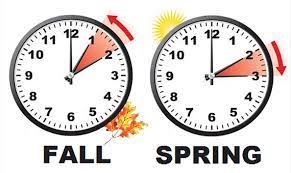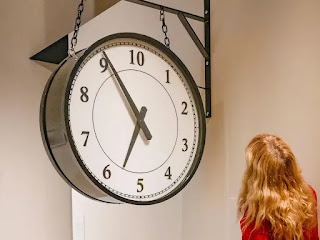I've been thinking about the history of time.
Greek sundial
Sun Time
Ancient peoples used sundials to track the time of day. The Egyptians. divided the time between sunrise and sunset into 12 parts, or hours. The length of daily sunlight varied through the year, so the hours did, too, being longer in the summer and shorter in the winter. Nights were tracked by watching specific stars, and were also divided into 12 hours, making 24 total. Sometimes, dripping water was used to track time at night.
Clock Time
When clocks were invented in the Middle Ages, they kept the 12 and 24 hours, but the hours were measured equally. Different cultures had started the day at different times, like sunset, midnight, or sunrise. Astronomers and navigators started at noon, because it was easy to measure, and they couldn't see the stars at midday, anyway. It eventually became the custom to start the civil day at midnight, but to set the clocks at noon, when the sun reached its highest point, which changed throughout the year. Each town would have a central clock, so that people could set their smaller clocks and watches. Each town had a different time, depending on the sun.
Minute Time
With one hand, it was possible to discern quarters of an hour. Tower clocks would ring bells every quarter of an hour. Another hand was added and, copying from Babylonian angular degrees, the hour was divided into 60 minute parts, or minutes. There were 5 minutes between when the minute hand pointed at two numbers, which thus divided the hour into 12 "fives," as in "take five." A third hand was eventually added to divide each minute into 60 second small parts, or "seconds."
Greenwich clock
Mean Time
But when the sun reached its highest point would vary from day to day by as much as 30 minutes, requiring constant synchronization throughout the year. This was fixed by using the mean time, instead of tracking the true sun time, so that successive mean noons were exactly 24 clock hours apart. This meant that accurate watches didn't have to be updated every day.
Standard Time
But even then, each town kept its own mean time, meaning that the time would be a few minutes different when traveling a few miles east or west, which was fine in the era of horses and buggies, but made the scheduling of trains difficult. For instance, Paris mean time was 9 minutes 21 seconds ahead of Greenwich, so it was agreed to make standard time zones exactly one hour apart from Greenwich, synchronized by telegraph.
Daylight Saving Time
Benjamin Franklin noticed that people wasted energy by staying up late after dark with their lamps lit, then keeping their curtains shut in the morning to keep out the sun while they slept in. During the World Wars, clocks were moved ahead an hour, in order to save anergy. Later, this was done around the summer in places with more daylight, requiring shifting the time twice a year and making international Zoom calls difficult, as different regions changed at different times, some of them in different directions, and some not at all. The actual energy savings now are actually minimal, at best. Currently, the main support behind DST is the retail industry, which wants shoppers to stay out later.
Future Time
There is currently a movement to use DST year-round in the US, that is, one hour ahead of Standard Time. This would eliminate annual shifts, but make the mornings darker, especially in the north during winter. Likely, the areas most affected would redraw their timezone boundaries. A bill has already passed in the US Senate, but not in the House.
Decimal Time
During the French Revolution, there was a movement to decimalize all measures. The metric system was introduced, with decimal multiples for units of length, weight, area, volume, and even money. The day was also divided decimally, into 10 hours, each hour into 100 minutes and each minute into 100 seconds, with 10 o'clock (0h00) marking midnight and 5 o'clock (5h00) marking noon, etc. 7-day weeks were even replaced with 10-day “décades." Decimal hours didn't last long, although some clocks and watches were produced, but décades were used from 1793 to 1802.
Star Time
Decimal time did continue in one way, though. It became used to date star observations by astronomers, and continues in use to this day. This became the inspiration for Star Trek's "stardates," with the numbers after the decimal generally representing the time of day, with .0 marking midnight and .5 marking noon, etc.













No comments:
Post a Comment